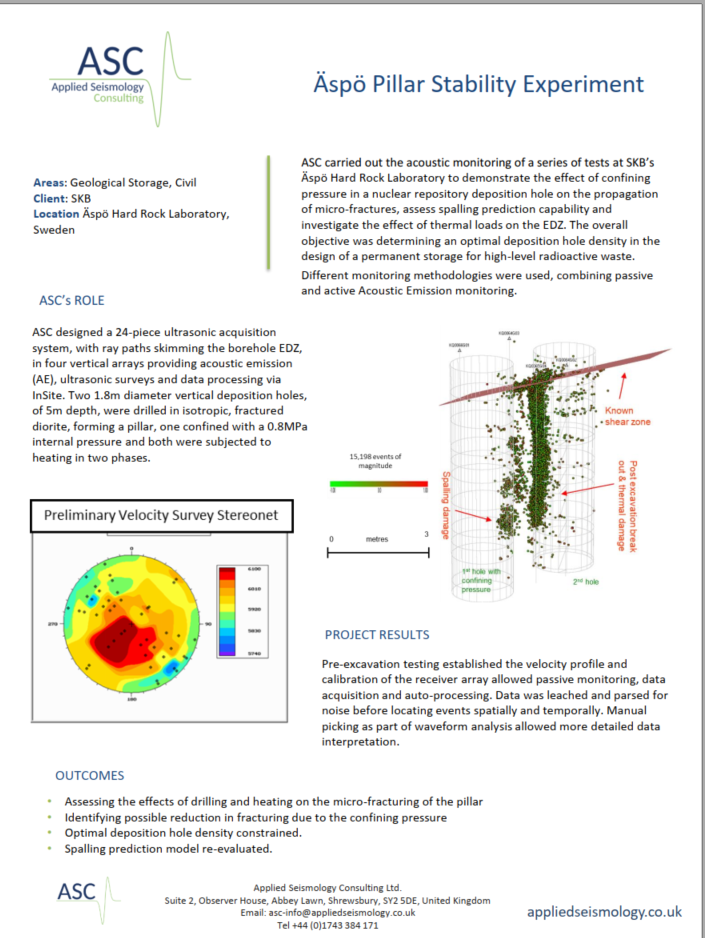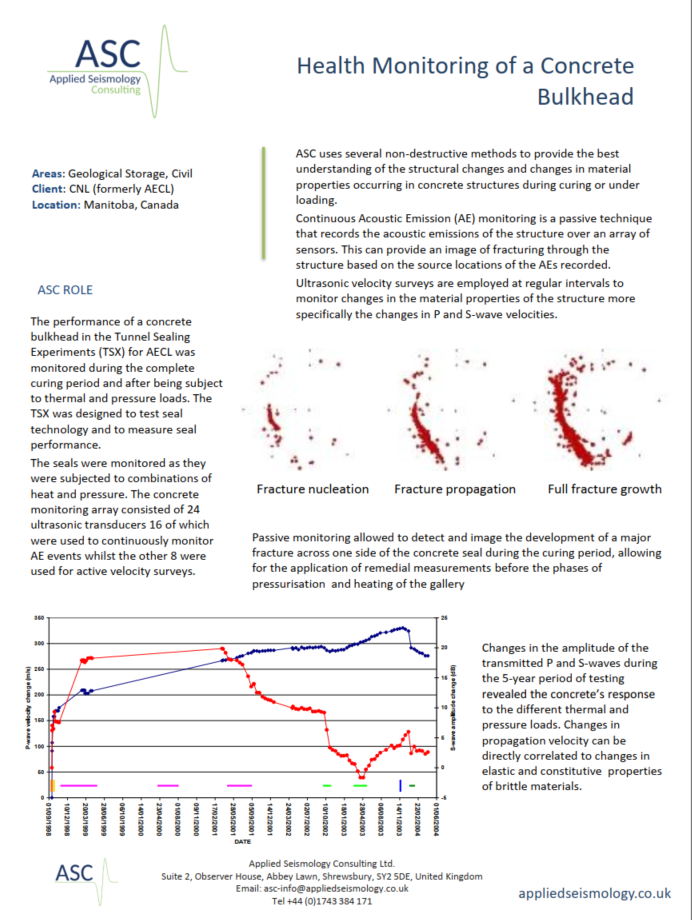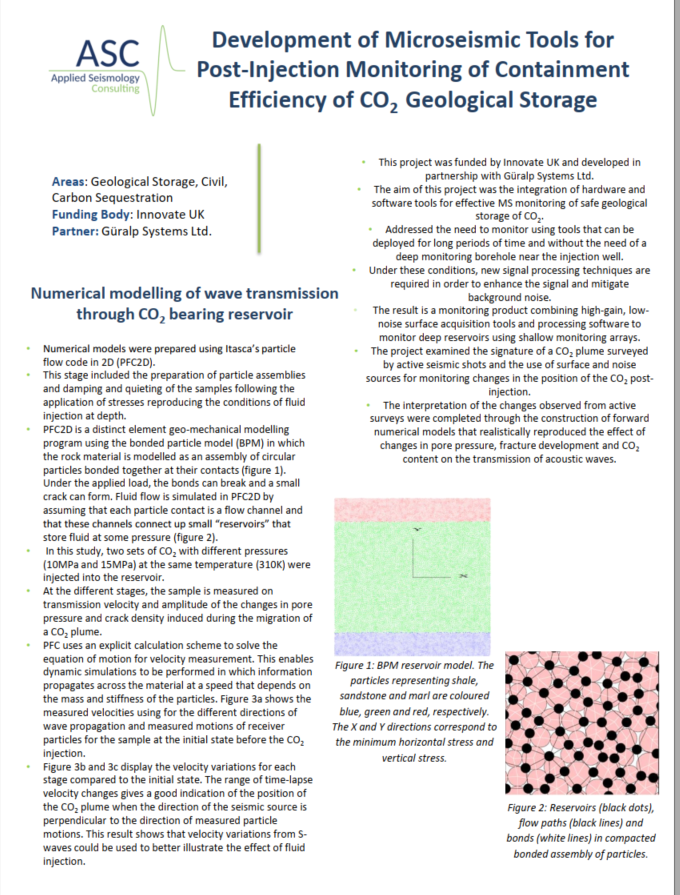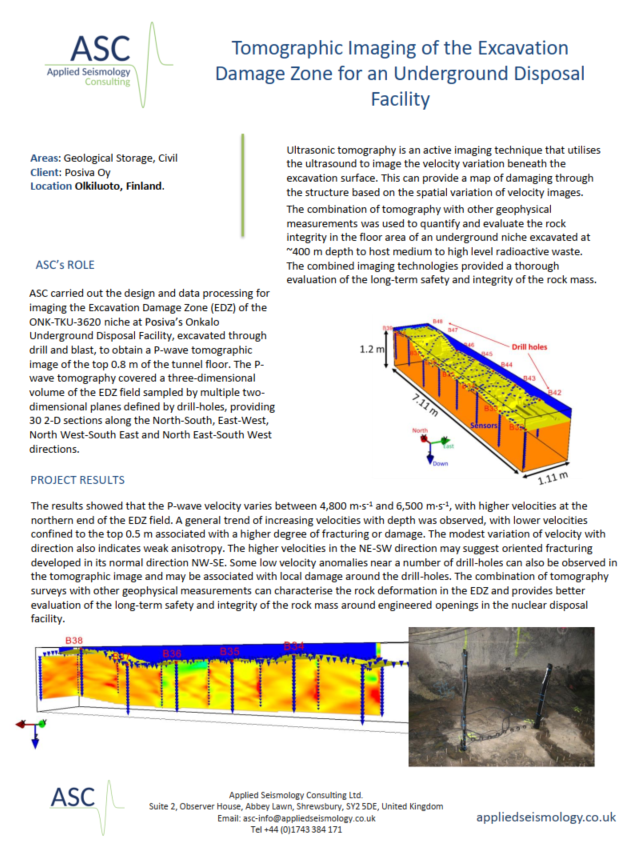 Case Studies
Case Studies
Health monitoring of a Concrete Bulkhead
The performance of a concrete bulkhead in the Tunnel Sealing Experiments (TSX) for AECL was monitored during the complete curing period and after being subject to thermal and pressure loads. The TSX was designed to test seal technology and to measure seal performance. The seals were monitored as they were subjected to combinations of heat and pressure. The concrete monitoring array consisted of 24 ultrasonic transducers 16 of which were used to continuously monitor AE events whilst the other 8 were used for active velocity surveys. Click on the thumbnail to download a summary of the observations.
Microseismic Tools for Monitoring of Containment Efficiency of CO2 Geological Storage
A collaborative project for the integration of hardware and software tools for effective MS monitoring of safe geological storage of CO2.
The project examined the signature of a CO2 plume surveyed
by active seismic shots and the use of surface and noise sources for monitoring changes in the position of the CO2 post injection.
The interpretation of the changes observed from active
surveys were completed through the construction of forward
numerical models that realistically reproduced the effect of
changes in pore pressure, fracture development and CO2
content on the transmission of acoustic waves. Click on the thumbnail to download a summary of the observations.
Monitoring of Pillar Stability
 Pillar Stability Experiment ASC carried out the acoustic monitoring of a series of tests at SKB’s Äspö Hard Rock Laboratory to demonstrate the effect of confining pressure in a nuclear repository deposition hole on the propagation of micro-fractures, assess spalling prediction capability and investigate the effect of thermal loads on the EDZ. The overall objective was determining an optimal deposition hole density in the design of a permanent storage for high-level radioactive waste.
Pillar Stability Experiment ASC carried out the acoustic monitoring of a series of tests at SKB’s Äspö Hard Rock Laboratory to demonstrate the effect of confining pressure in a nuclear repository deposition hole on the propagation of micro-fractures, assess spalling prediction capability and investigate the effect of thermal loads on the EDZ. The overall objective was determining an optimal deposition hole density in the design of a permanent storage for high-level radioactive waste.
Different monitoring methodologies were used, combining passive and active Acoustic Emission monitoring. Click on the thumbnail to download a summary of the observations.
Tomographic Imaging of Excavation Damage Zone
ASC carried out the design and data processing for imaging the Excavation Damage Zone (EDZ) of the ONK-TKU-3620 niche at Posiva’s Onkalo Underground Disposal Facility, excavated through drill and blast, to obtain a P-wave tomographic image of the top 0.8 m of the tunnel floor. The Pwave tomography covered a three-dimensional volume of the EDZ field sampled by multiple two dimensional planes defined by drill-holes, providing 30 2-D sections along the North-South, East-West, North West-South East and North East-South West directions. Click on the thumbnail to download a summary of the observations.





